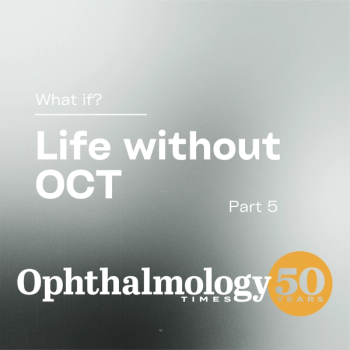
ASRS Live: Population pharmacokinetics and safety of OPT-302
Dante Pieramici, MD, spoke with our team to share information on OPT-302, or sozinibercept, for the treatment of neovascular AMD and other retinal vascular diseases at the 2023 ASRS annual meeting.
Dante Pieramici, MD, spoke with our team to share information on OPT-302, or sozinibercept, for the treatment of neovascular AMD and other retinal vascular diseases at the 2023 ASRS annual meeting.
Video Transcript
Editor's note - This transcript has been edited for clarity.
Dante Pieramici, MD:
Hi, I'm Dante Pieramici, a partner at the California Retina Consultants in Santa Barbara, California. I'm here in beautiful Seattle, and the rest of the country is boiling right now, but we have nice weather here in Seattle for the American Society of Retina Specialists meeting.
It was my pleasure to give a talk on OPT-302, or sozinibercept, the treatment of neovascular AMD and other retinal vascular diseases. My talk was a pooled analysis of the Phase 1/2 trials looking at pharmacokinetic data obtained from the serum as well as a pooled safety analysis. You know, OPT-302 is a as a trap protein inhibitor of VEGF-C and -D. It's a fusion protein, and we, what we've learned is that when you inhibit VEGF-A there's an compensatory upregulation of VEGF-C and -D. And this may lead to additional problems. So a more rational approach would be to inhibit VEGF-A as well as -C and -D. And so a combination approach with OPT-302 may be a very good way to go.
In phase 2 clinical data that included over 366 patients, showed that we got superior visual results with a combination blockage of both WEGF-A, -C, and -D, as compared to monotherapy VEGF-A blockage, as well as better anatomical results. And this is particularly true in patients that had minimally classic or a neovascularisation, where at 6 months, there was a 6 letter difference between the groups.
And the study that I presented here we looked at pharmacokinetics, and the pharmacokinetics of the drug are very similar to that of aflibercept in his bio-distribution as well as its absorption. We found that in this serum that last has a serum half life of about 7 days, and using the serum analysis, we developed an ocular model that demonstrated that the half life in the vitreous is about 4 and a half days. So very similar to other interventional anti-VEGF agents that are being used currently in our practice.
In the pool safety analysis, which included about 600 patients, we really find no additional safety signal in the combination approach, compared to the monotherapy anti-VEGF either for ocular safety or systemic safety, very infrequent inflammatory events, no vasculitis type events. So very well-tolerated with this combination approach. This drug is currently in phase 3 clinical trials the SHORE and COAST trial, looking at combination anti-VEGF suppression combined with sozinibercept, compared to monotherapy VEGF-A suppression. And the hopes are that this combination approach will have superior visual results in this phase 3 clinical trial. And we'll know the results sometime in the next couple of years. So I'm very excited about the potentials of this drug for our patients to actually get better results than we have over the years. Thank you very much.
Newsletter
Don’t miss out—get Ophthalmology Times updates on the latest clinical advancements and expert interviews, straight to your inbox.


















































.png)


